surgery basal implants
The treatment for the placement of a basal implant and its fixed prosthesis is completed in just 5 days, with patients ready to return home on the 7th day. Unlike traditional dental implants, only one step is required, and the basal implant is immediately loaded, providing both functionality and comfort without delay.
The success of the treatment relies on strictly following 6 phases, which are essential to ensure proper implant integration, prosthesis stability, and the prevention of complications. Below is the classic procedure for the installation of basal implants and their fixed prosthesis (bridge):
This streamlined protocol ensures efficiency while maintaining the highest standards of care.
Basal dental implants, step by step procedure
The panoramic X-ray and 3D dental scan are performed before the consultation, enabling the digital reconstruction of the dento-maxillary arches. Based on these the treatment strategy is determined and the size and shape of the basal implant.
During the consultation, the treatment plan is confirmed, while the prosthetist helps select the shape, color, and size of the teeth. For those opting for general anesthesia or sedation, the anesthetist ensures compatibility with their health.
At Anveli Dental, a free preoperative expertise minimizes changes to the treatment plan, with morphological simulation ensuring high-precision dental surgery.
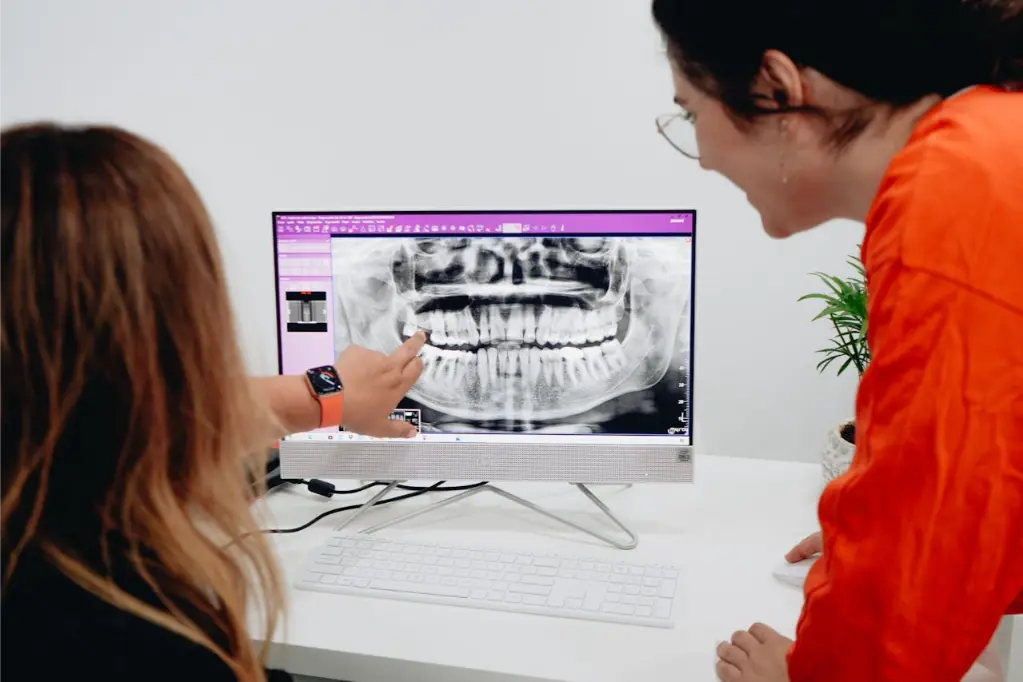
The surgical operation, which consists of placing the basal implants, begins with the extraction of the teeth. After a gingival plasty (treatment of the soft tissues avoiding the retraction of the gum) the dental surgeon places each basal implant at the locations predefined by the dento-maxillary study.
The placement of the new generation of basal dental implants is a relatively painless but lengthy procedure. To ensure maximum comfort, we offer the option of general anesthesia or unconscious sedation. While local anesthesia is available, the sights and sounds of the procedure may be stressful for some patients, making sedation or general anesthesia a preferred choice for a smoother experience.
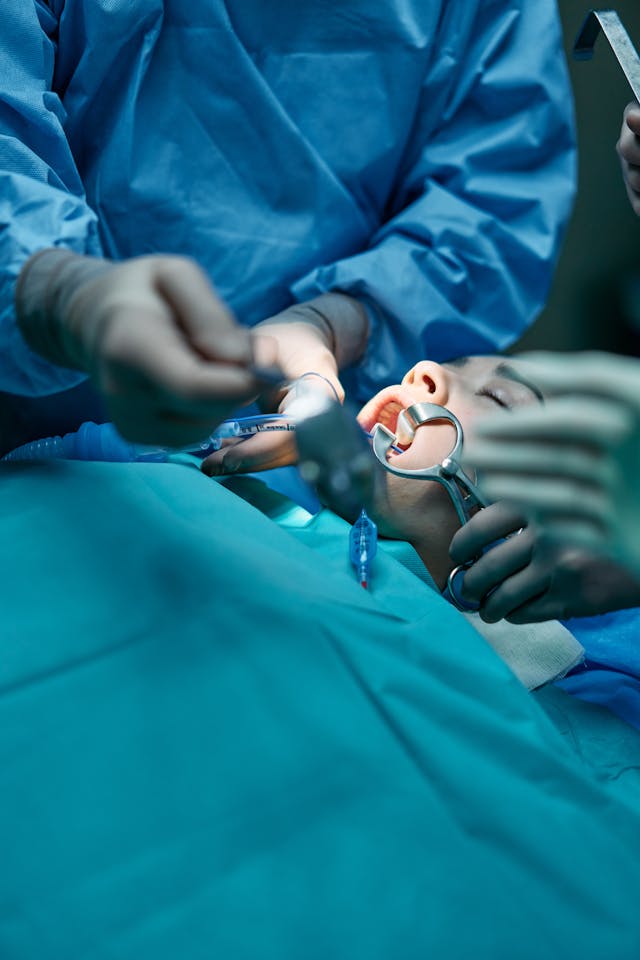
The basal implant is a minimally invasive solution, utilizing a 1-millimeter drill for precise placement with minimal trauma to bone tissue. Its elliptical design allows it to self-implant like a self-tapping screw, eliminating the need for gum detachment in most cases. Securely anchored into the cortical bone (using the bi-cortical technique), it offers exceptional stability and long-lasting durability, seamlessly integrating into the dental socket even after extractions. This cutting-edge approach ensures a pain-free, quick, and virtually bloodless procedure, enabling faster recovery and minimal patient discomfort.
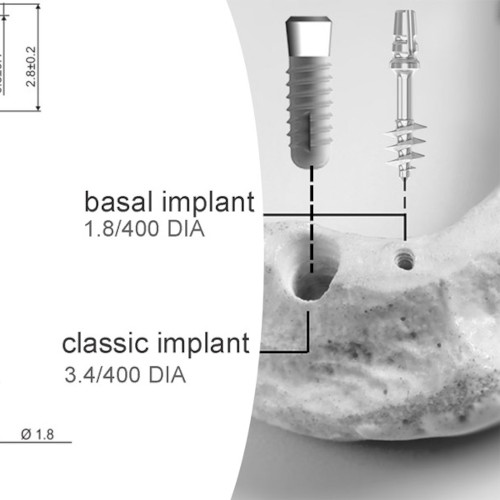
The basal dental implant (Bi-cortical Implant), thanks to its elliptical shape will self-implant with a minimum of trauma on the bone tissue. On the same principle as a self-drilling screw, it will follow the micro-perforation which serves as a guide. If there have been no extractions, the gum does not present any postoperative lesions. If there has been extraction of the tooth, the implant will come s’ implant in the dental socket.
In most cases, it is not necessary to detach the gum tissue. The basal implant reaches the second layer of the cortical bone (hence its name bi-cortical implant). Bone cortex is present everywhere, but it is found in larger quantities on the upper jaw, under the septum nasal and zygomatic zone (at the level of the wisdom teeth of the upper jaw). On the lower jaw, it is present mainly in the frontal zone.
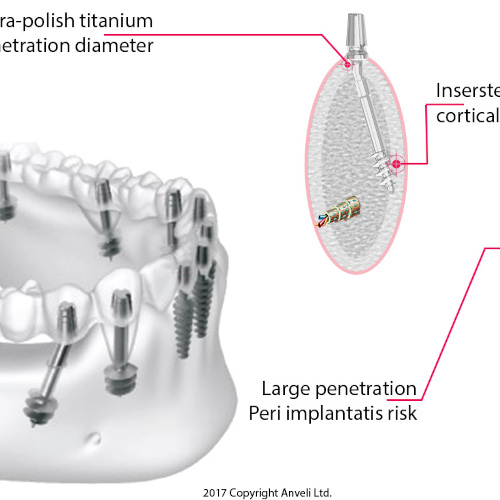
During the placement of a basal implant, gingival plasty may be performed (in cases of extraction) to reduce the risk of gingival resorption and prevent gaps between the bridge and the gum. This procedure involves regularizing the post-extraction ridges with sutures to accelerate the natural healing process, achieving up to 90% healing within 48 hours of extractions and implant placement. Additionally, the gum tissue is thoroughly cleaned, and any infections or periodontal pockets are treated through curettage.
For patients with significant gingival loss, the dental bridge can include a thin layer of false gum (1mm) that closely mimics the natural gingiva, ensuring a seamless connection between the bridge and gum. This customization is discussed and finalized with the dental technician on a case-by-case basis.
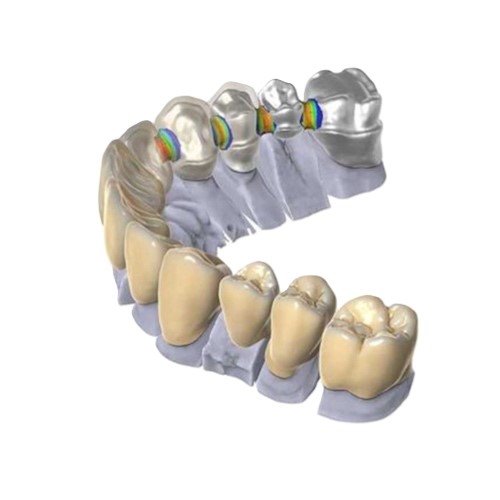
Placement of the fixed prosthesis
Prosthesis over basal dental implants is a crucial component in the success of last-generation of implantology. It must be securely fixed within 72 hours of the dental surgery. This prosthesis ensures the proper distribution of chewing forces across all basal implants, enhancing stability and durability. The success of the entire treatment largely depends on the precise execution of the fixed prosthesis, making it an indispensable step in basal implantology.

The measurements taken after the placement of the basal implant require great precision. During the hours following the operation, the technicians in our laboratories, using equipment such as a 3D scanner, carry out a modeling of the jaws in order to guarantee precise balancing of the occlusion.
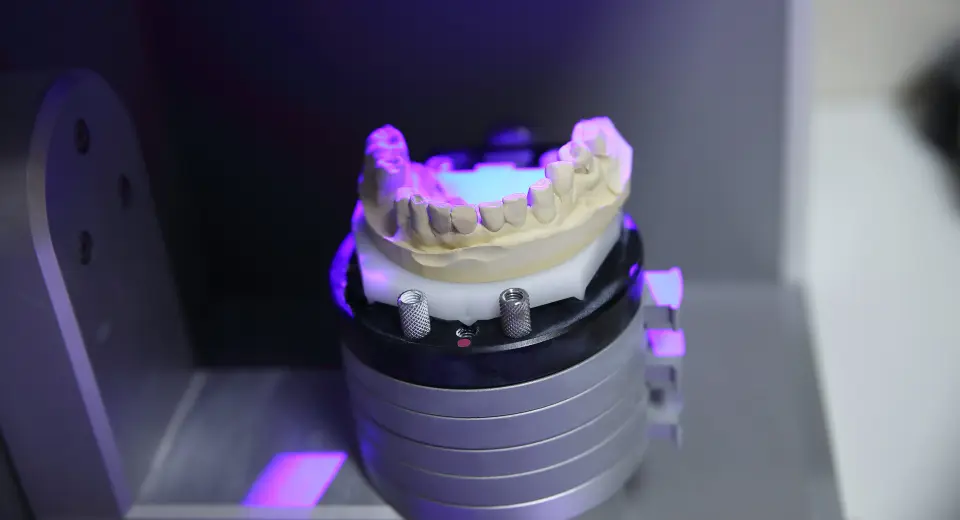
After selecting the shape, size, and color of their new teeth, patients preview the crowns in their mouth the day after the basal implants are placed. Developed by the International Implant Foundation, this process allows real-time adjustments to the shape, inclination, and placement based on patient preferences and facial structure.
Once the aesthetics are approved, the final bridge is crafted within 48 hours, ensuring a personalized result. This innovative approach eliminates surprises, unlike traditional methods were limited after completion.
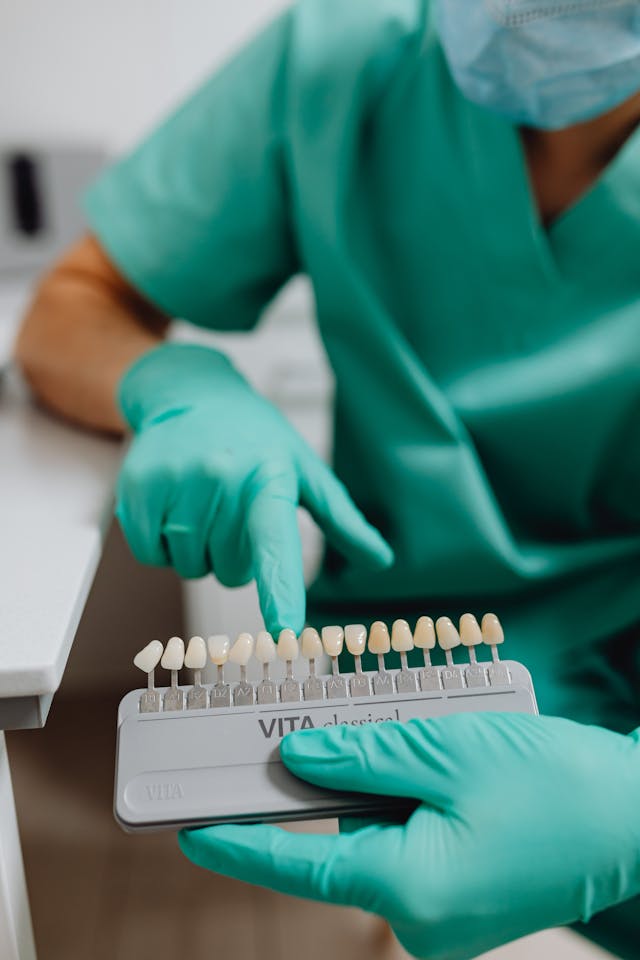
After 3 tests and corrections and numerous precise measurements of the occlusion and the junction with the gingiva, the prosthesis is fixed on the basal implants. The patient can eat normally the same evening.
Discover the fixed prosthesis on All on 4 or All on 6 implants: definition, advantages,...
Dentists who practice basal implants in France The basal implantology in France, which consists of...
Placing a (traditional) dental implant? Although for both types of implantology it is a part...